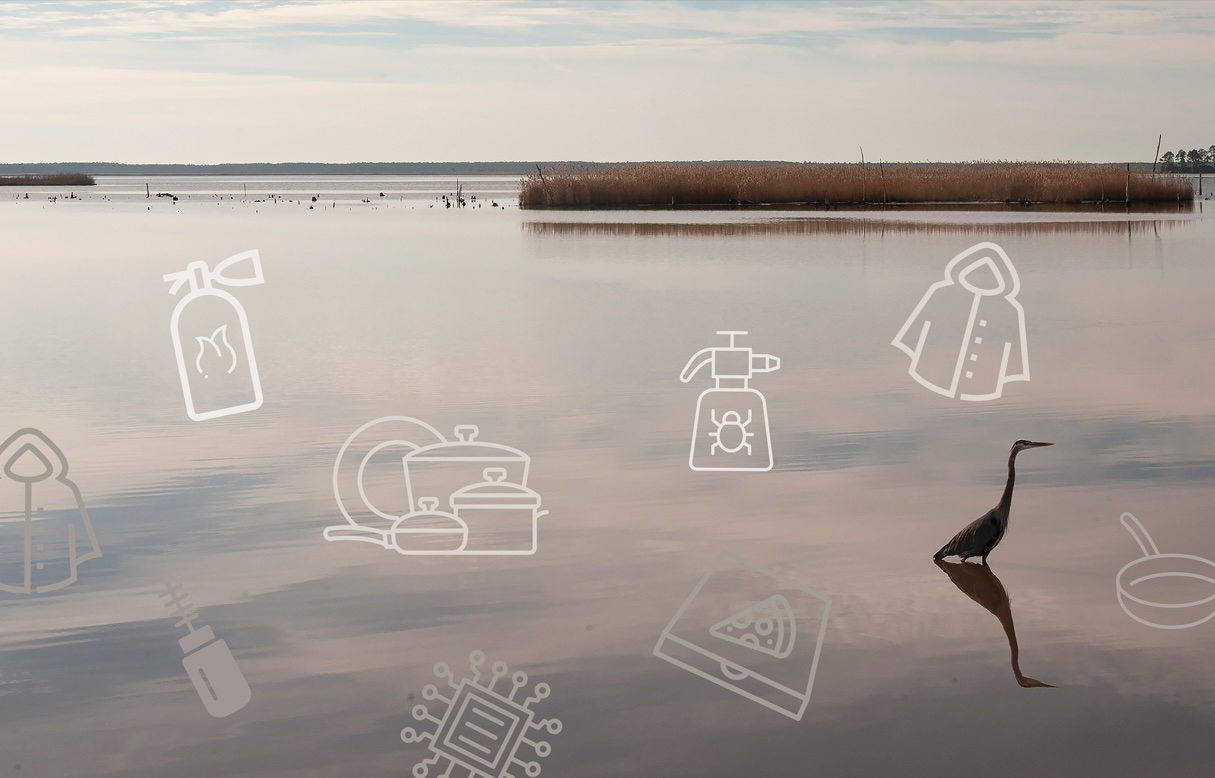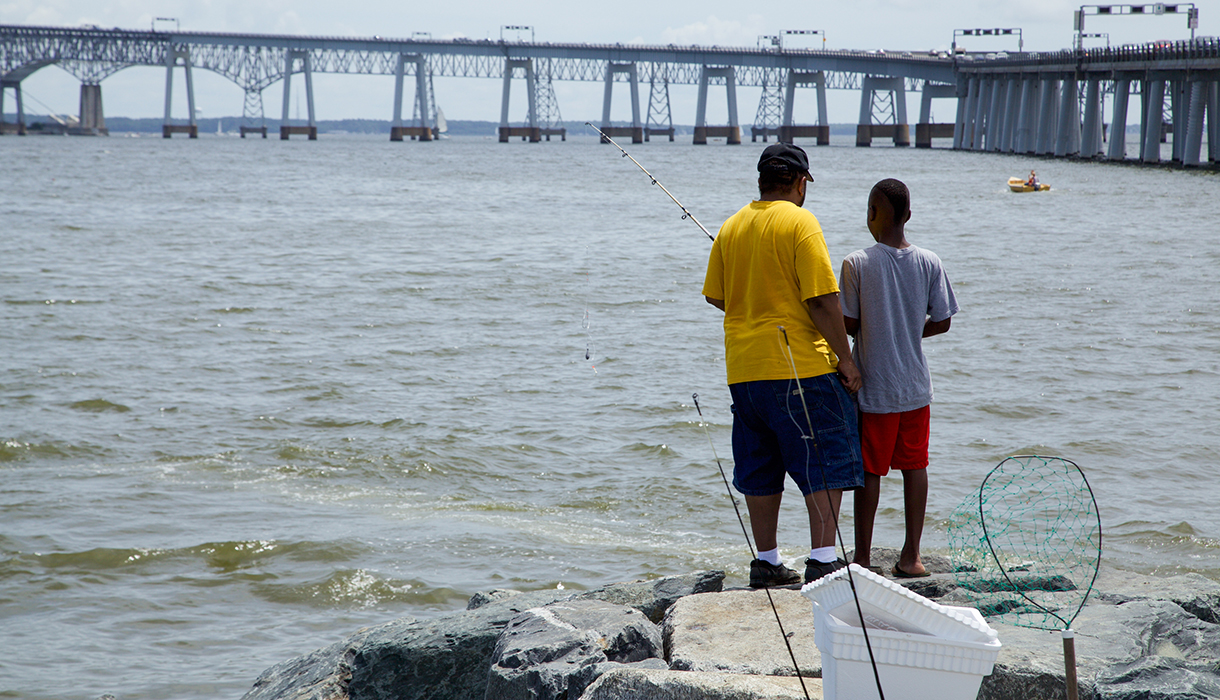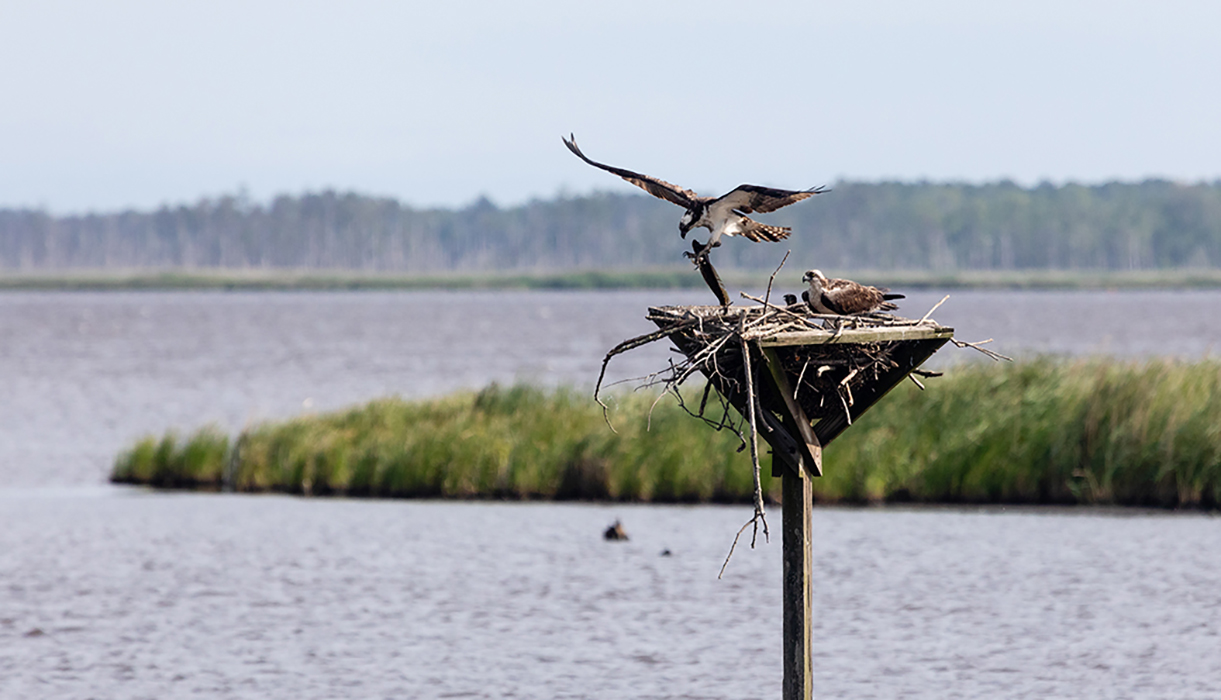Complicated Contaminants: Finding PFAS in the Chesapeake Bay
May 2024 • Volume 23, Number 1
Diagnosing the PFAS Problem
By Ashley Goetz
PFAS are found nearly everywhere, including in the Chesapeake Bay. What are these so-called “forever chemicals” and what do they mean for the people and wildlife that call the Bay watershed home? Across the country, researchers are piecing together the PFAS puzzle—and these complicated chemicals are driving them to think about environmental contaminants in new ways.
Dinner on the Line
Their favorite fish, locations, and gear may vary, but all subsistence fishers have something in common: they eat what they catch. As a result, they may be at higher risk of consuming contaminants like PFAS. Maryland’s fish consumption advisories are one tool used to communicate this risk.
Strong, Sticky, and Tricky to Measure
Detecting PFAS in the Chesapeake Bay is tricky. Compared to freshwater, Bay water is a chemistry soup, and varying salinity adds an extra layer of complexity. In the lab and in the field, researchers are developing methods to more reliably detect and measure what’s in the water.
Flying Higher Up the Food Web
PFAS have circulated in coastal environments for decades, including in the Chesapeake Bay, where millions of migrating birds rest and nest each year. Through fieldwork, lab studies, and models, researchers are starting to unravel how these chemicals affect birds.
Meet the Extension Specialist: Andy Lazur
PFAS are just the latest challenge Andy Lazur is tackling as a University of Maryland Extension specialist. From podcasts to pond visits, Lazur prioritizes getting information to the people who need it.







![[Maryland Sea Grant]](/images/uploads/siteimages/CQ/MD-Logo.png)